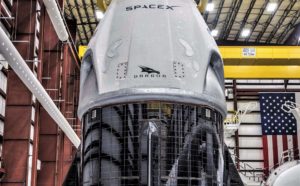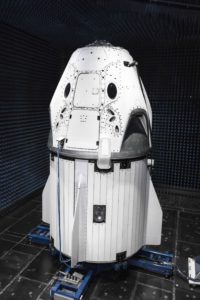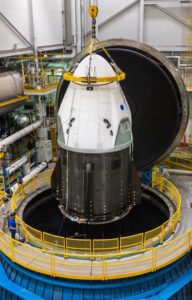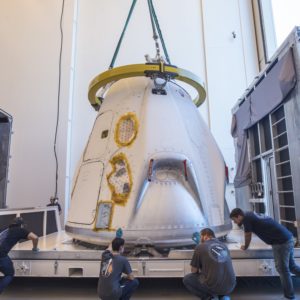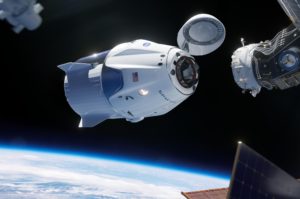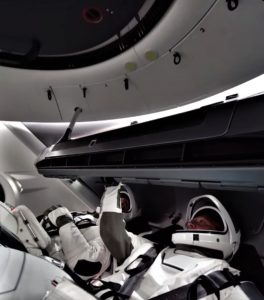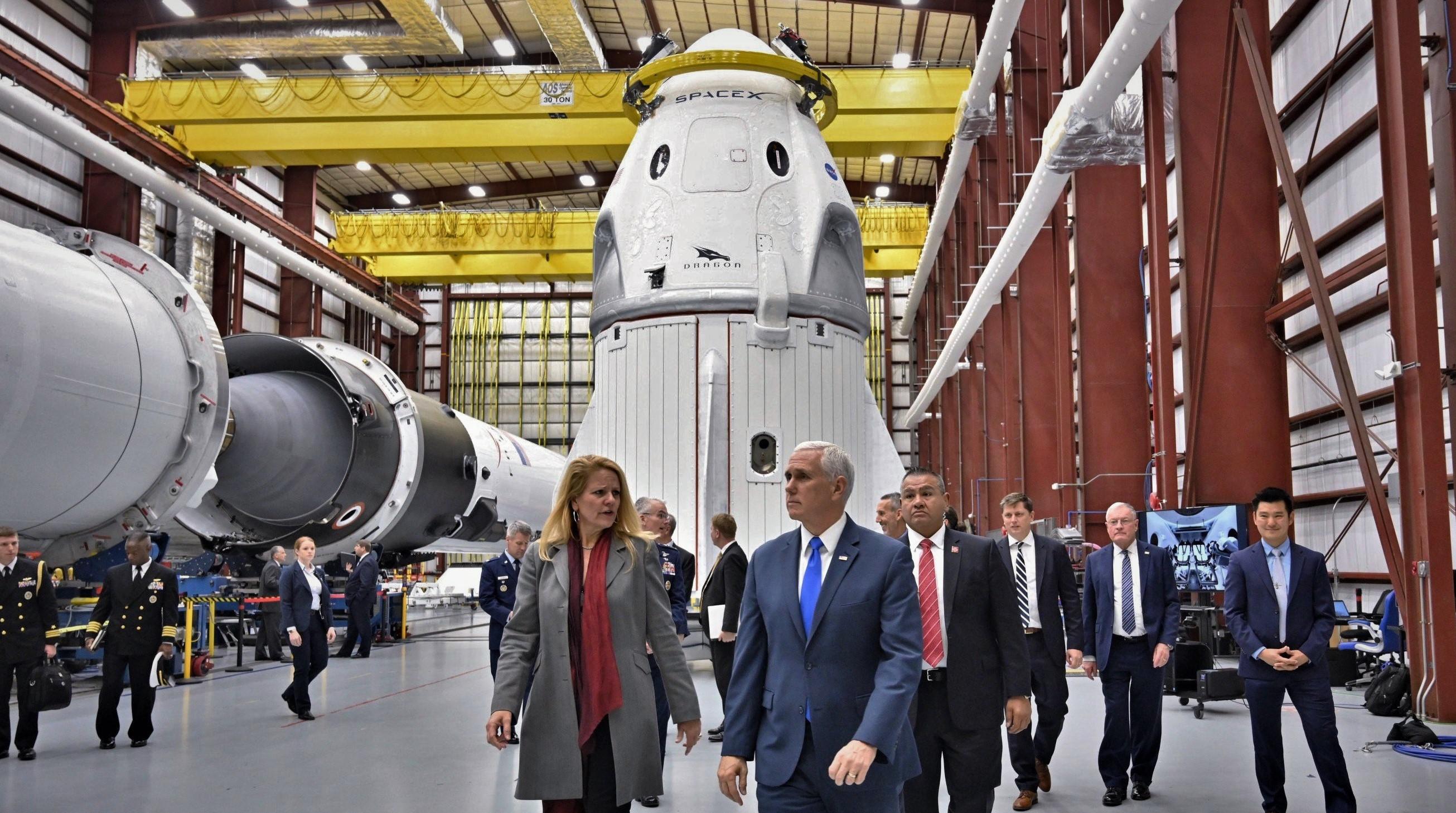

SpaceX
SpaceX shows off first completed Crew Dragon spaceship with new Falcon 9
New photos posted from an official tour of SpaceX’s Pad 39A launch facilities reveal that SpaceX has effectively completed integration and preflight preparations of the company’s first flightworthy Crew Dragon spacecraft, as well as the new Falcon 9 Block 5 rocket that will be tasked with launching it early next year.
Currently targeting launch no earlier than (NET) January 17th, this inaugural Crew Dragon launch – known as Demonstration Mission 1 (DM-1) – will be conducted without a crew aboard to ensure that the spacecraft’s performance and characteristics fit within design parameters, hopefully giving NASA the data it needs to certify Crew Dragon to launch astronauts as early as June 2019.
omfg @spacex just posted some absolutely stunning photos inside Pad 39A's hangar: meet the first completed Crew Dragon and its Falcon 9 Block 5 rocket (B1051) 😀 In the far left (second photo), you can also see what is probably B1047 in the midst of refurbishment. pic.twitter.com/NWULyAEhpQ
— Eric Ralph (@13ericralph31) December 18, 2018
Aside from the wonderful fact that all (or nearly all) of the hardware needed for Crew Dragon’s launch debut can be seen in the four photos posted today, this is also the first time SpaceX has ever provided a real photo of the next-gen spacecraft’s trunk-based solar array. A dramatic departure from Cargo Dragon’s more traditional duo of multi-panel solar arrays, which deploy from disposable covers and fold out like wings, SpaceX decided from the start that Crew Dragon would take a much different approach. In a move that presumably cut the risk of solar array deployment, Crew Dragon’s panels are conformally attached (i.e. curved to fit) to the disposable trunk’s rear exterior.
Incredible opportunity to see @SpaceX's Dragon 2 Capsule – an important part of the future of American human space exploration as we aim to return American astronauts to space on U.S. rockets from U.S. soil! pic.twitter.com/Pk5lkpOFEX
— Vice President Mike Pence Archived (@VP45) December 18, 2018
Rather than deploying its arrays like wings, Crew Dragon will always have its solar cells ready and waiting to generate power, simply requiring the spacecraft to face one half of its trunk towards the sun. According to a few individuals involved with the trunk, guaranteeing food fitment between individual cells and subsections and avoiding the problems caused by different thermal expansion coefficients (shrinking and expanding as the temperature changes) was no easy task and led to many, many headaches in the final weeks of integration and testing. From a less objective standpoint, Crew Dragon’s new conformal solar array is absolutely stunning, and it will be a shame to see each sculpture-like trunk relegated to a destructive atmospheric reentry after each launch.
Pragmatically speaking, it’s extremely satisfying to see all the hardware (both rocket and spacecraft) effectively under the same roof at the launch pad they will soon lift off from. Much like Falcon Heavy, NASA’s Commercial Crew Program (CCP) has been beset with the better part of two years of delays from original launch targets in 2017 for both Boeing and SpaceX. Since then, a combination of NASA bureaucracy and technical/programmatic stumbles made by both companies have conspired to almost indefinitely delay the first uncrewed and crewed trips to orbit.
- At long last, SpaceX’s first completed Crew Dragon has been integrated with a flightworthy trunk and is awaiting attachment to Falcon 9. (SpaceX)
- The first complete Crew Dragon is likely just days away from rolling out to Pad 39A atop Falcon 9. (SpaceX)
- The DM-1 Crew Dragon testing inside SpaceX’s anechoic chamber, May 2018. (SpaceX)
- SpaceX’s Demo Mission-1 Crew Dragon seen preparing for vacuum tests at a NASA-run facility, June 2018. (SpaceX)
- The first spaceworthy Crew Dragon capsule is already in Florida, preparing for its November 2018 launch debut. The same capsule will be refurbished and reflown as few as three months after recovery. (SpaceX)
- Crew Dragon arrives at ISS. (SpaceX)
- DM-2 astronauts Bob Behnken and Doug Hurley train for their first flight in Crew Dragon. (NASA)
SpaceX suffered catastrophic Falcon 9 failures in both 2015 and 2016 and has largely been working to ameliorate the technical and organizational flaws that allowed those anomalies to occur, while also having to convince NASA that they are ready to safeguard the lives of the space agency’s astronauts. Since SpaceX’s last known total vehicle failure in September 2016, Falcon 9 and Falcon Heavy have managed an extraordinary 37 successful launches in a row in a little more than 24 months.
SpaceX is targeting Crew Dragon’s first orbital launch sometime in January 2019, with the placeholded launch date currently sitting on January 17th, pending International Space Station (ISS) availability and NASA’s go-ahead. Given the presence of Falcon 9 B1051 in 39A’s integration hangar and the fact that SpaceX technicians already appear to be integrating the first and second stages, the company may well be ready to perform a full-up dress rehearsal – involving Falcon 9 and Crew Dragon rolling out and going vertical on Pad 39A – before 2018 is out.
For prompt updates, on-the-ground perspectives, and unique glimpses of SpaceX’s rocket recovery fleet check out our brand new LaunchPad and LandingZone newsletters!
News
SpaceX’s Crew-11 mission targets July 31 launch amid tight ISS schedule
The flight will lift off from Launch Complex 39A at Kennedy Space Center in Florida.

NASA and SpaceX are targeting July 31 for the launch of Crew-11, the next crewed mission to the International Space Station (ISS). The flight will lift off from Launch Complex 39A at Kennedy Space Center in Florida, using the Crew Dragon Endeavour and a Falcon 9 booster.
Crew Dragon Endeavour returns
Crew-11 will be the sixth flight for Endeavour, making it SpaceX’s most experienced crew vehicle to date. According to SpaceX’s director of Dragon mission management, Sarah Walker, Endeavour has already carried 18 astronauts representing eight countries since its first mission with NASA’s Bob Behnken and Doug Hurley in 2020, as noted in an MSN report.
“This Dragon spacecraft has successfully flown 18 crew members representing eight countries to space already, starting with (NASA astronauts) Bob (Behnken) and Doug (Hurley) in 2020, when it returned human spaceflight capabilities to the United States for the first time since the shuttle retired in July of 2011,” Walker said.
For this mission, Endeavour will debut SpaceX’s upgraded drogue 3.1 parachutes, designed to further enhance reentry safety. The parachutes are part of SpaceX’s ongoing improvements to its human-rated spacecraft, and Crew-11 will serve as their first operational test.
The Falcon 9 booster supporting this launch is core B1094, which has launched in two previous Starlink missions, as well as the private Ax-4 mission on June 25, as noted in a Space.com report.
The four-members of Crew-11 are NASA astronauts Zena Cardman and Mike Fincke, as well as Japan’s Kimiya Yui and Russia’s Oleg Platonov.
Tight launch timing
Crew-11 is slated to arrive at the ISS just as NASA coordinates a sequence of missions, including the departure of Crew-10 and the arrival of SpaceX’s CRS-33 mission. NASA’s Bill Spetch emphasized the need for careful planning amid limited launch resources, noting the importance of maintaining station altitude and resupply cadence.
“Providing multiple methods for us to maintain the station altitude is critically important as we continue to operate and get the most use out of our limited launch resources that we do have. We’re really looking forward to demonstrating that capability with (CRS-33) showing up after we get through the Crew-11 and Crew-10 handover,” Spetch stated.
News
SpaceX launches Ax-4 mission to the ISS with international crew
The SpaceX Falcon 9 launched Axiom’s Ax-4 mission to ISS. Ax-4 crew will conduct 60+ science experiments during a 14-day stay on the ISS.
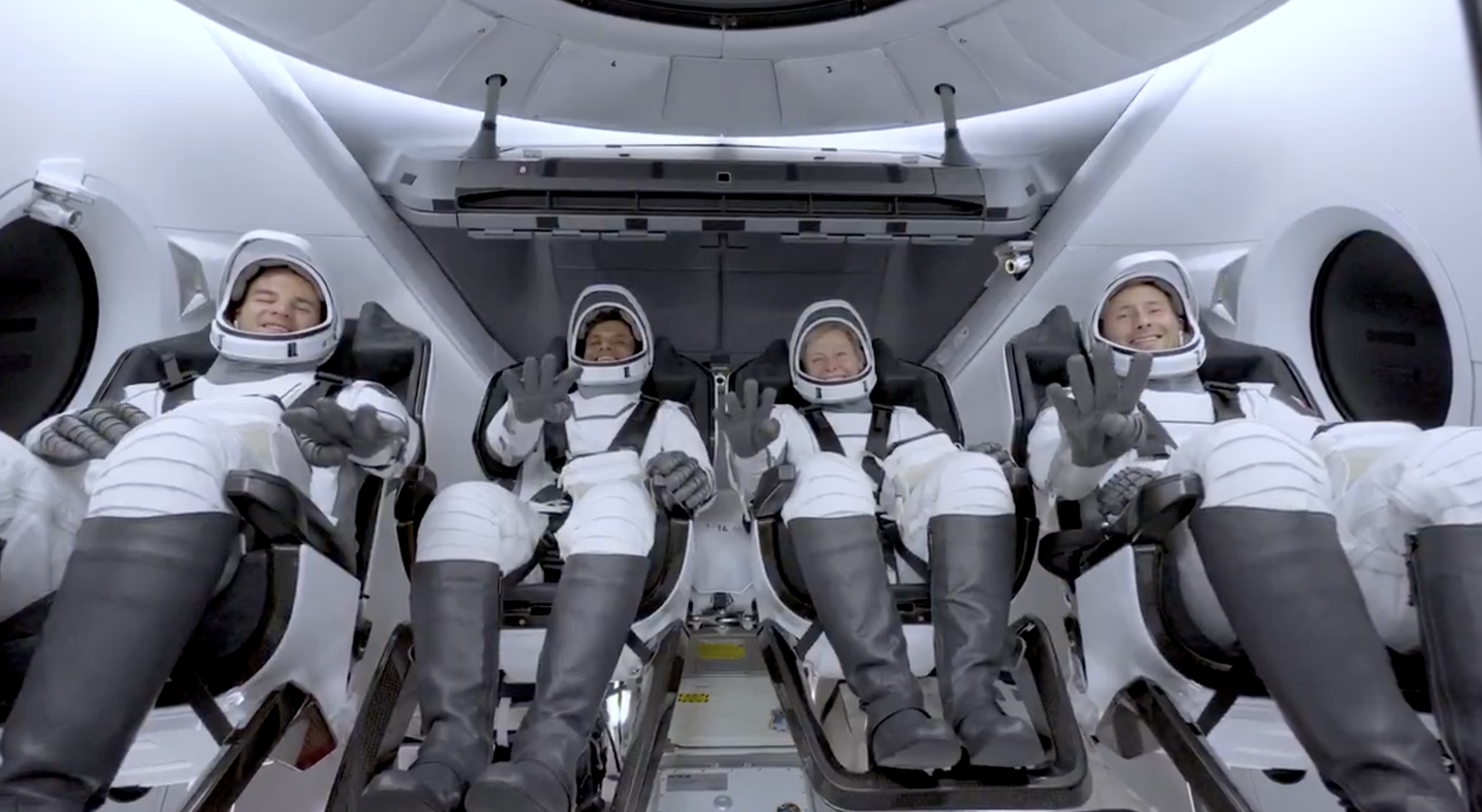
SpaceX launched the Falcon 9 rocket kickstarting Axiom Space’s Ax-4 mission to the International Space Station (ISS). Axiom’s Ax-4 mission is led by a historic international crew and lifted off from Kennedy Space Center’s Launch Complex 39A at 2:31 a.m. ET on June 25, 2025.
The Ax-4 crew is set to dock with the ISS around 7 a.m. ET on Thursday, June 26, 2025. Axiom Space, a Houston-based commercial space company, coordinated the mission with SpaceX for transportation and NASA for ISS access, with support from the European Space Agency and the astronauts’ governments.
The Ax-4 mission marks a milestone in global space collaboration. The Ax-4 crew, commanded by U.S. astronaut Peggy Whitson, includes Shubhanshu Shukla from India as the pilot, alongside mission specialists Sławosz Uznański-Wiśniewski from Poland and Tibor Kapu from Hungary.
“The trip marks the return to human spaceflight for those countries — their first government-sponsored flights in more than 40 years,” Axiom noted.
Shukla’s participation aligns with India’s Gaganyaan program planned for 2027. He is the first Indian astronaut to visit the ISS since Rakesh Sharma in 1984.
Axiom’s Ax-4 mission marks SpaceX’s 18th human spaceflight. The mission employs a Crew Dragon capsule atop a Falcon 9 rocket, designed with a launch escape system and “two-fault tolerant” for enhanced safety. The Axiom mission faced a few delays due to weather, a Falcon 9 leak, and an ISS Zvezda module leak investigation by NASA and Roscosmos before the recent successful launch.
As the crew prepares to execute its scientific objectives, SpaceX’s Ax-4 mission paves the way for a new era of inclusive space research, inspiring future generations and solidifying collaborative ties in the cosmos. During the Ax-4 crew’s 14-day stay in the ISS, the astronauts will conduct nearly 60 experiments.
“We’ll be conducting research that spans biology, material, and physical sciences as well as technology demonstrations,” said Whitson. “We’ll also be engaging with students around the world, sharing our experience and inspiring the next generation of explorers.”
SpaceX’s Ax-4 mission highlights Axiom’s role in advancing commercial spaceflight and fostering international partnerships. The mission strengthens global space exploration efforts by enabling historic spaceflight returns for India, Poland, and Hungary.
News
Starlink Cellular’s T-Mobile service to grow with third-party app data
From Oct 2025, T-Satellite will enable third-party apps in dead zones! WhatsApp, X, AccuWeather + more coming soon.
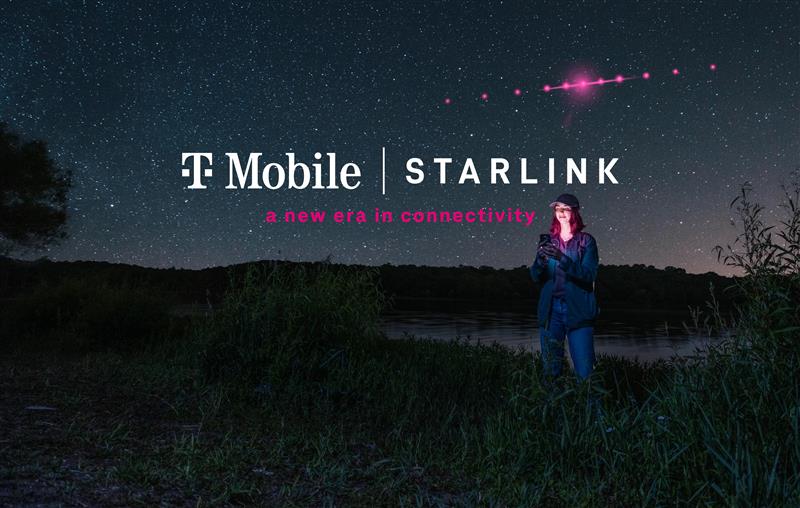
Starlink Cellular’s T-Mobile service will expand with third-party app data support starting in October, enhancing connectivity in cellular dead zones.
T-Mobile’s T-Satellite, supported by Starlink, launches officially on July 23. Following its launch, T-Mobile’s Starlink Cellular service will enable data access for third-party apps like WhatsApp, X, Google, Apple, AccuWeather, and AllTrails on October 1, 2025.
T-Mobile’s Starlink Cellular is currently in free beta. T-Satellite will add MMS support for Android phones on July 23, with iPhone support to follow. MMS support allows users to send images and audio clips alongside texts. By October, T-Mobile will extend emergency texting to all mobile users with compatible phones, beyond just T-Mobile customers, building on its existing 911 texting capability. The carrier also provides developer tools to help app makers integrate their software with T-Satellite’s data service, with plans to grow the supported app list.
T-Mobile announced these updates during an event celebrating an Ookla award naming it the best U.S. phone network, a remarkable turnaround from its last-place ranking a decade ago.
“We not only dream about going from worst to best, we actually do it. We’re a good two years ahead of Verizon and AT&T, and I believe that lead is going to grow,” said T-Mobile’s Chief Operating Officer Srini Gopalan.
T-Mobile unveiled two promotions for its Starlink Cellular services to attract new subscribers. A free DoorDash DashPass membership, valued at $10/month, will be included with popular plans like Experience Beyond and Experience More, offering reduced delivery and service fees. Meanwhile, the Easy Upgrade promotion targets Verizon customers by paying off their phone balances and providing flagship devices like the iPhone 16, Galaxy S25, or Pixel 9.
T-Mobile’s collaboration with SpaceX’s Starlink Cellular leverages orbiting satellites to deliver connectivity where traditional networks fail, particularly in remote areas. Supporting third-party apps underscores T-Mobile’s commitment to enhancing user experiences through innovative partnerships. As T-Satellite’s capabilities grow, including broader app integration and emergency access, T-Mobile is poised to strengthen its lead in the U.S. wireless market.
By combining Starlink’s satellite technology with strategic promotions, T-Mobile is redefining mobile connectivity. The upcoming third-party app data support and official T-Satellite launch mark a significant step toward seamless communication, positioning T-Mobile as a trailblazer in next-generation wireless services.
-

 Elon Musk2 weeks ago
Elon Musk2 weeks agoTesla investors will be shocked by Jim Cramer’s latest assessment
-

 News3 days ago
News3 days agoTesla debuts hands-free Grok AI with update 2025.26: What you need to know
-

 Elon Musk1 week ago
Elon Musk1 week agoElon Musk confirms Grok 4 launch on July 9 with livestream event
-

 Elon Musk5 days ago
Elon Musk5 days agoxAI launches Grok 4 with new $300/month SuperGrok Heavy subscription
-

 News2 weeks ago
News2 weeks agoTesla Model 3 ranks as the safest new car in Europe for 2025, per Euro NCAP tests
-

 Elon Musk2 weeks ago
Elon Musk2 weeks agoxAI’s Memphis data center receives air permit despite community criticism
-

 News5 days ago
News5 days agoTesla begins Robotaxi certification push in Arizona: report
-

 Elon Musk2 weeks ago
Elon Musk2 weeks agoTesla scrambles after Musk sidekick exit, CEO takes over sales


